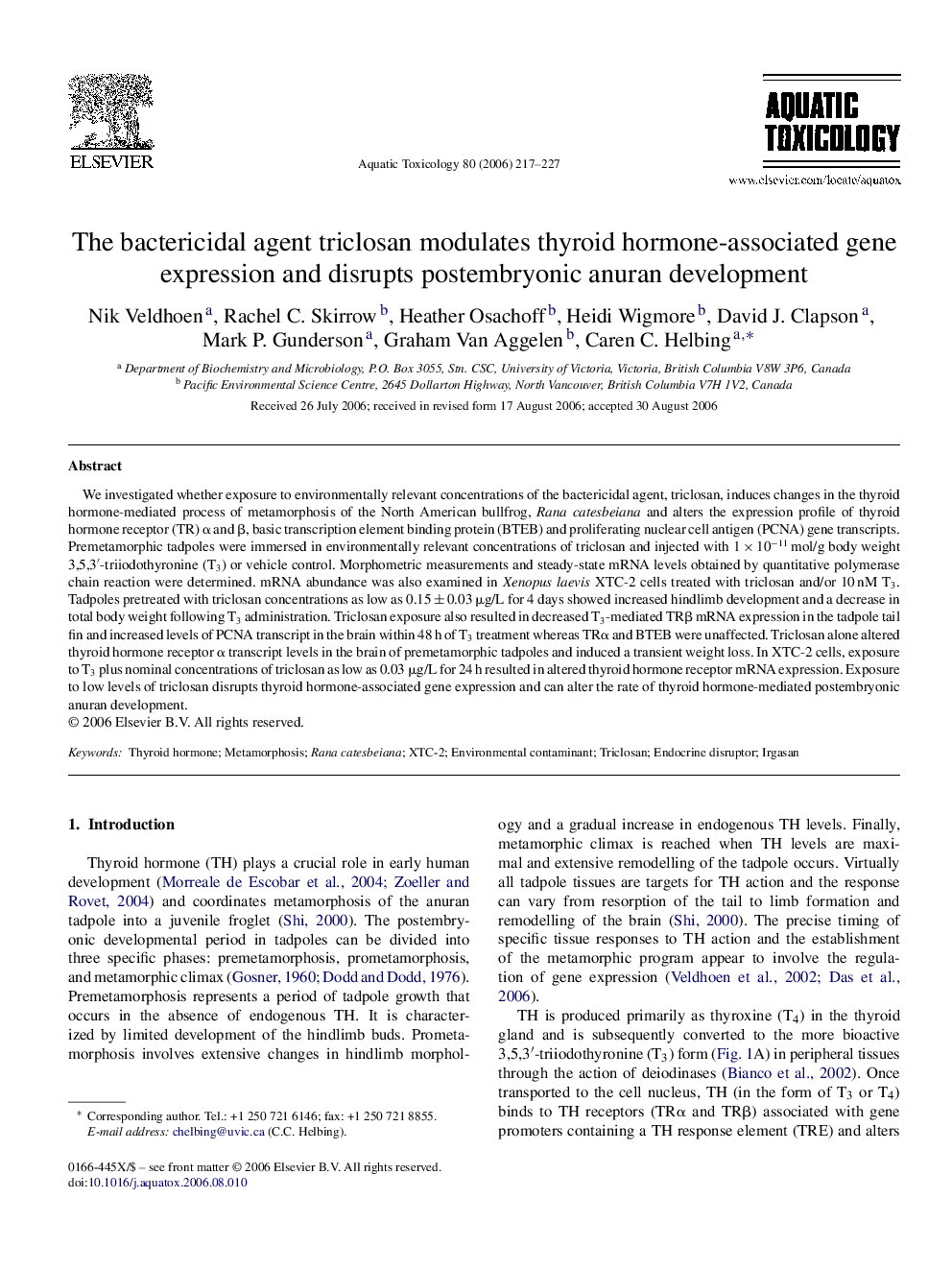| Article ID | Journal | Published Year | Pages | File Type |
|---|---|---|---|---|
| 4531220 | Aquatic Toxicology | 2006 | 11 Pages |
We investigated whether exposure to environmentally relevant concentrations of the bactericidal agent, triclosan, induces changes in the thyroid hormone-mediated process of metamorphosis of the North American bullfrog, Rana catesbeiana and alters the expression profile of thyroid hormone receptor (TR) α and β, basic transcription element binding protein (BTEB) and proliferating nuclear cell antigen (PCNA) gene transcripts. Premetamorphic tadpoles were immersed in environmentally relevant concentrations of triclosan and injected with 1 × 10−11 mol/g body weight 3,5,3′-triiodothyronine (T3) or vehicle control. Morphometric measurements and steady-state mRNA levels obtained by quantitative polymerase chain reaction were determined. mRNA abundance was also examined in Xenopus laevis XTC-2 cells treated with triclosan and/or 10 nM T3. Tadpoles pretreated with triclosan concentrations as low as 0.15 ± 0.03 μg/L for 4 days showed increased hindlimb development and a decrease in total body weight following T3 administration. Triclosan exposure also resulted in decreased T3-mediated TRβ mRNA expression in the tadpole tail fin and increased levels of PCNA transcript in the brain within 48 h of T3 treatment whereas TRα and BTEB were unaffected. Triclosan alone altered thyroid hormone receptor α transcript levels in the brain of premetamorphic tadpoles and induced a transient weight loss. In XTC-2 cells, exposure to T3 plus nominal concentrations of triclosan as low as 0.03 μg/L for 24 h resulted in altered thyroid hormone receptor mRNA expression. Exposure to low levels of triclosan disrupts thyroid hormone-associated gene expression and can alter the rate of thyroid hormone-mediated postembryonic anuran development.
